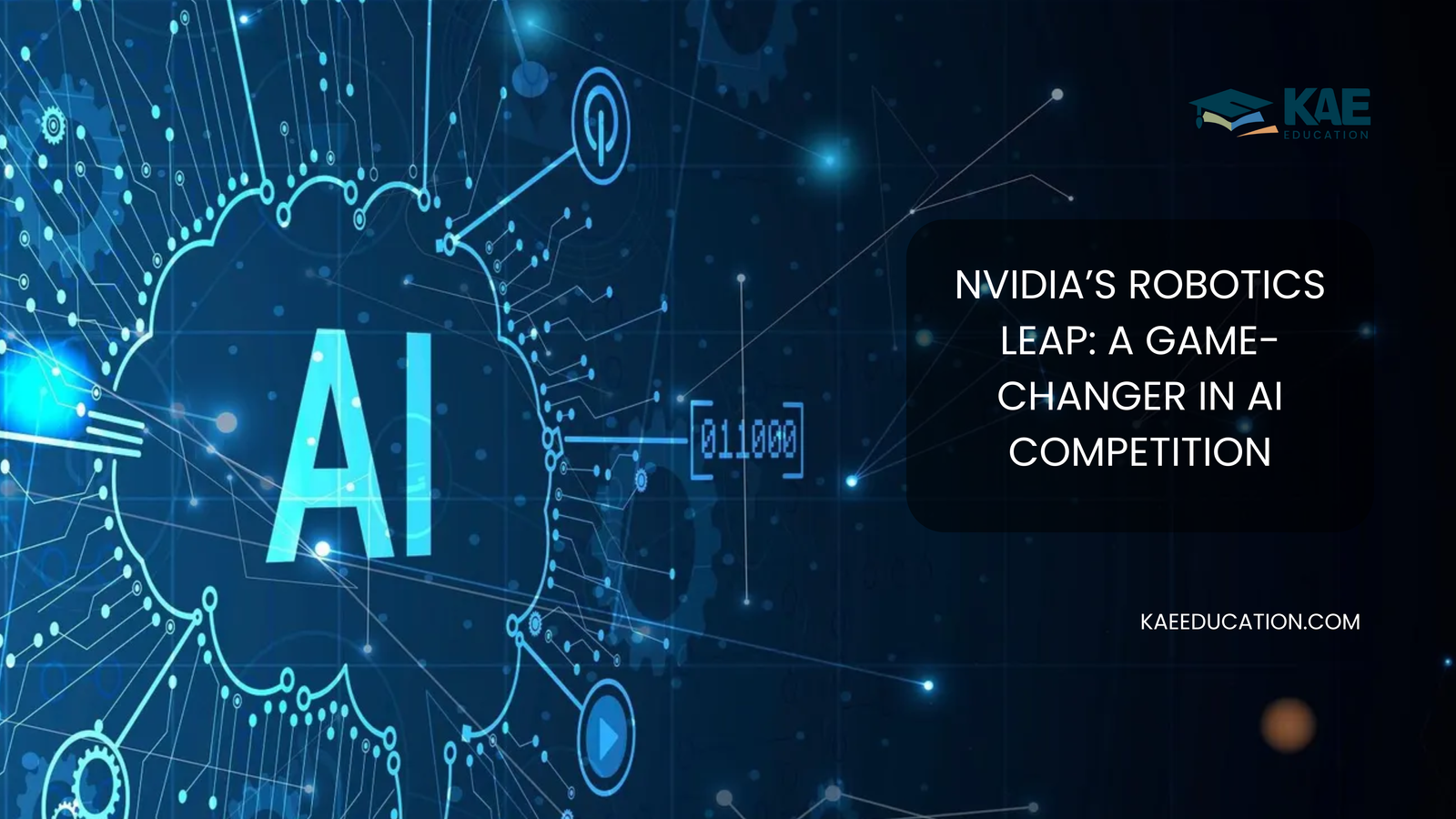NVIDIA’s Robotics Leap: A Game-Changer in AI Competition
NVIDIA is making significant strides in the field of robotics, positioning itself as a leader in the AI revolution. With its innovative technologies like the Jetson Thor and advancements in generative Artificial Intelligence, NVIDIA is set to transform Industries by enhancing robotic capabilities. This blog explores NVIDIA’s recent developments, their implications for AI, and the future demand for robotics in 2025.
NVIDIA’s Robotics Revolution
NVIDIA’s commitment to Artificial Intelligence and robotics is evident through its various initiatives aimed at integrating advanced Artificial Intelligence into robotic systems. The introduction of Jetson Thor, a compact AI computer designed specifically for humanoid robots, exemplifies this commitment. This powerful device enables robots to perform complex tasks such as real-time object recognition and Natural Language Processing, pushing the boundaries of what robots can achieve.
Key Features of Jetson Thor:
(1) Compact Design: Optimized for energy efficiency and advanced processing.
(2) Enhanced Capabilities: Supports real-time object recognition and autonomous navigation.
(3) Developer-Friendly: Aimed at a wide range of developers to facilitate rapid deployment of Artificial Intelligence-driven robotics.
NVIDIA CEO Jensen Huang emphasizes that this technology could lead to unprecedented productivity levels across Industries. He envisions a future where robots act as co-workers, significantly enhancing operational efficiency.
The Impact of Generative Artificial Intelligence on Robotics
Generative Artificial Intelligence is at the forefront of NVIDIA’s innovations, enabling smarter robots capable of learning and adapting to their environments. This technology allows for the development of digital avatars and autonomous Machines that can interact seamlessly with Humans. For instance, NVIDIA’s Avatar Cloud Engine (ACE) integrates generative Artificial Intelligence models to create lifelike digital avatars that enhance user experiences across various applications.

Benefits of Generative Artificial Intelligence in Robotics:
(1) Improved Human-Robot Interaction: Robots can understand and respond to Human commands more effectively.
(2) Autonomous Learning: Robots can learn from their environments, improving their functionality over time.
(3) Efficiency in Operations: Streamlined processes lead to reduced costs and increased productivity.
Future Demand and Growth in 2025
As we look towards 2025, the demand for Artificial Intelligence-powered robotics is expected to surge. Industries are increasingly recognizing the potential of automation to address labor shortages and enhance productivity. According to Industry analysts, the global robotics market is projected to grow significantly, driven by advancements in Artificial Intelligence technology and increased adoption across sectors such as Manufacturing, Healthcare, and Logistics.
Factors Driving Growth:
(1) Labor Shortages: Automation solutions are becoming essential as companies seek to maintain productivity levels.
(2) Technological Advancements: Continuous improvements in Artificial Intelligence capabilities make robots more versatile and effective.
(3) Investment in Robotics: Increased funding from both private and public sectors is accelerating research and development in robotic technologies.
NVIDIA’s leap into robotics signifies a transformative era where Artificial Intelligence plays a crucial role in shaping the future of work and Industry dynamics. As we approach 2025, the integration of advanced robotics powered by generative Artificial Intelligence will likely redefine operational standards across various sectors, paving the way for enhanced productivity and innovation.
FAQs
What is NVIDIA's Jetson Thor?
Jetson Thor is a compact AI computer designed for humanoid robots, enabling advanced processing capabilities for complex tasks.
How does generative Artificial Intelligence enhance robotics?
Generative AI allows robots to learn from their environments and interact more effectively with humans, improving operational efficiency.
What Industries will benefit most from NVIDIA's robotics innovations?
Industries such as Manufacturing, Healthcare, Logistics, and Entertainment are expected to see significant benefits from these advancements.
What are the key features of NVIDIA’s robotics ecosystem?
The ecosystem includes tools for designing, training, and deploying robots efficiently with a focus on energy-saving technologies.
How does NVIDIA view its role in the robotics market?
NVIDIA aims to be a key technology supplier rather than a manufacturer of robots, focusing on providing essential components for robotic systems.
What future trends can we expect in robotics by 2025?
Expect increased automation across industries due to labor shortages, technological advancements, and rising investments in robotic solutions.
How does NVIDIA ensure its technologies remain competitive?
By continuously innovating and expanding its partnerships within the tech ecosystem, ensuring that it stays ahead of competitors like AMD and Intel.

